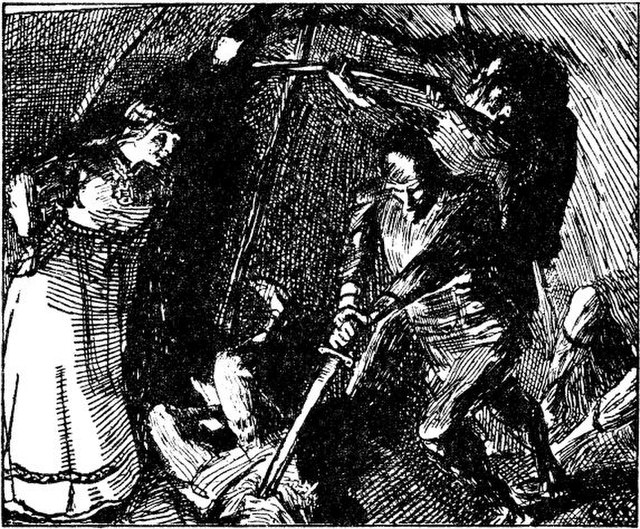The cruelest of the Vikings
Erik's "Bloody Axe" Reign

Illustration of Erik Blodøks who, at the instigation of his wife, kills a nobleman - Wikicommons
"He was a handsome man, strong and very virile, a great and fortunate man of war; but wicked, surly, rude, and silent." This is how the Haraldskvæði—the saga of Harald I Fairhair—describes his heir, Erik Haraldsson (885–954), known as "Bloodaxe" (Blodøks in Old Norse). These words immediately reveal the contradictions in the future king of Norway's personality, which would lead to a life of bloodshed and violence.
To ascend to the throne in 930, as Erik I of Norway, Erik killed five of his brothers (only Håkon survived), further enhancing his reputation as a bloodthirsty Viking—a notoriety he had already earned from raids in Denmark at the age of 15. His reign, further influenced by his malicious wife, Gunnhild—often described as an evil witch with a sinister influence over her husband—quickly stood out for unprecedented cruelty. Raids, summary executions, and ruthless persecution of anyone who defied his authority became commonplace. By 934, this brutality led a coalition of jarls to drive Erik from the throne in favor of his brother, Håkon "the Good."
Erik sought refuge in England at the court of King Aethelstan, where he offered his services as a warrior to quell both internal rebellions and external enemies. Thanks to his bravery and ferocity, Erik swiftly conquered Northumbria, becoming its lord in 947 as a vassal of Aethelstan. However, his bloodthirsty methods once again incited rebellion among the local nobles, who replaced him with another Norseman, Olaf.
After a period of raiding Saxon lands, Erik returned in 952 to reclaim Northumbria and ruled there—as well as York—until 954. That year, he was killed by Olaf's son, Maccus, who avenged his father’s death and brought Erik "Bloodaxe's" reign of terror to an end.
Erik's son, Harald II Eriksson, would later become King of Norway in 961.
Nordic historians—and many others—regard Erik Haraldsson as one of the most brutal Vikings of his time. His insatiable thirst for blood and power ultimately led him to a death as violent and ruthless as the life he had lived, leaving behind a legacy of fear and cruelty.
Tom Shippey, Vita e morte dei grandi vichinghi, Odoya, 2021
2025-08-20
Salvatore Ciccarello
